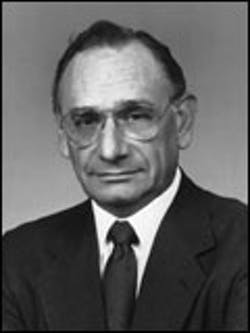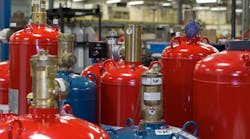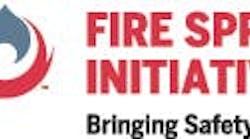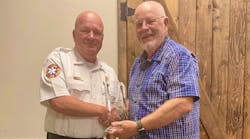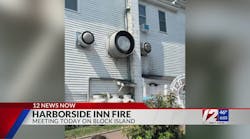Monday, Dec. 1, 1958, was a typical early winter day in Chicago, with gloomy skies, a damp penetrating cold and patches of snow on the ground. It was my day off as a reporter for The Chicago American newspaper and, as usual, I was spending it riding as a firefighter on Rescue Squad 2. This was counter to the Chicago Fire Department rule book, but I had been doing it for a half-dozen years and no one in authority seemed to care. I was honored and proud to be accepted as a member of Squad 2 - which had a well-earned reputation as a tough company that covered a dangerous district with a heavy fire load on the city's near-west side.
It had been an unusually slow day until 2:42 P.M., when the "sounder" signaled that Engine 85 was going to a fire on Iowa Street on the far-west side. It was followed immediately by the full box alarm - four engines, two ladder trucks and a squad - indicating that the fire alarm office knew they had a working fire. I looked up the box card, wrote it on the alarm board and shouted that Squad 2 was due on the 3-11 (third alarm). We gathered around the "joker stand," listening to the radio when the 2-11 banged in. Then the battalion chief called for "every ambulance in the city" and ordered: "Give me a 5-11!" He was jumping it three alarms and we were rolling out the door, pulling on our helmets, coats and boots as the 5-11 started to ring on the joker.
We had a four-mile run to the fire and racing west on our Autocar squad wagon we could see a column of black smoke rising in the gray sky. Our adrenaline kicked in another notch and we knew that whatever lay ahead, Squad 2 would follow Captain Leroy Dean anywhere he led us and that we could handle anything we encountered. The radio reported "people trapped" and for incoming squads to "be prepared for rescue work." (Another shot of adrenaline!) Problem was we didn't have anything to prepare in those days - no SCBA masks, no power saws, no "Jaws" or other special tools. All we had were axes and pike poles. From the back bench of the squad I could see fire ambulances and police squadrolls taking victims away from the fire. It was surreal because we could only hear our own siren as we passed like rockets flying in opposite directions.
We pulled up near the southeast corner of Our Lady of the Angels School, a two-story, U-shaped building with a brick exterior and wood-lathe and plaster interior, built in 1910. The second floor of the north wing was fully involved in heavy black smoke, with flames shooting through the partially collapsed roof. We were ordered to "open up" the south-wing roof and climbed up a truck company's wooden aerial ladder. But to reach the truck we first had to run through a crowd of parents in the street who were darting back and forth like a flock of birds, looking for their kids. For a split second, my eyes met those of a woman wearing a head scarf, a beige blouse and dark-brown slacks. Her face was an expression of indescribable horror as she frantically looked for her child.
From the roof we could look across a narrow courtyard and see the full dimension of this fire. If anyone was still on the second floor, they couldn't be alive, but a frantic rescue effort was underway. We used our axes and a roof-puller ladder to open the south wing, then brought up a three-inch line and began throwing a powerful stream across the courtyard. We could see companies taking a beating as they vainly tried to fight their way into the classrooms. But we still had no idea of the lives lost on the north side of the building, where scores of children had died of smoke inhalation or were killed jumping from the windows.
All squads were ordered to the front of the building and a priest who identified himself as the superintendent of Catholic schools ran up to me and said: "There are 74 children in that school!" I'll never know why he came up to me of all the firemen on the scene. But I explained to Captain Dean that I had to go to work as a reporter, took off my helmet and put on a soft squad cap. I phoned the bulletin to my paper and began interviewing eyewitnesses as bodies were carried from the building and the death toll began to mount. (My colleague Steve Lasker, a great photographer for the American, was nearby in his car when the 2-11 was sounded and he immediately headed for the scene. He took the immortal picture of Firefighter Richard Scheidt, of Squad 1, carrying the body of 10-year-old John Jajkowski out of the building.)
I encountered two good friends, Sergeant Drew Brown and Detective Frank Grady Jr. of the police arson squad. Drew asked me to come with them as they entered the northeast stairwell, where the fire appeared to have started. Once inside, there was no doubt about it. A V-shaped black char pattern came out of a trash barrel in the basement and ran up the wall and stairs to the first floor, where a door kept it out of the first floor. "Just a common wooden door," Drew Brown repeated several times. The fire then roared up the wooden staircase to the second floor, where there were no doors and the open stairwell became an open furnace. The fire flashed over in the cockloft and second-floor corridor - trapping the helpless children in six classrooms. The final death toll was 92 children and three nuns.
Immediately, we knew why so many had died so fast. We didn't know who or what had started the fire in the trash barrel, but we knew that the killer was an open stairwell that carried the fire into the second floor. Other factors included a delayed discovery and delayed alarm; the school did not have a city fire alarm box and there was no sprinkler system. The building conformed to a weak fire and life-safety code that was in effect at the time it was built. (Ironically, a coroner's inquest investigating the Collingwood, OH, school fire that killed 175 people in 1908 had recommended sprinklers for all school buildings way back then.)
There were months of investigations by various city and private agencies, including the Archdiocese, and each one denied its own responsibility for the catastrophe that had occurred. My newspaper found many schools in the city with the same hazards that existed at Our Lady of the Angels. School officials loudly proclaimed that they would spend the money to enclose stairwells and install sprinkler systems. Some buildings blatantly violated codes; others had been "grandfathered" out when the codes were modernized. Such was the power of the public and parochial schools. A blistering report by the National Fire Protection Association (NFPA) squarely put the blame on the city and the Archdiocese for "failing to recognize their life-safety obligations in housing children in structures which are firetraps." Percy Bugbee, the NFPA president, repeated his warning that there were "no new lessons to be learned; only old lessons that tragically went unheeded."
But a year later, hardly any progress had been made in Chicago's firetrap schools. Only a handful had been improved and top officials, whose hand-wringing testimony at the various investigations after the fire had been flat out in support of sprinklers, were now having second thoughts about spending the money. Some questioned whether sprinklers even worked. Once again, the public and parochial school lobby was exerting its political clout. School fire safety was going to be a long and difficult fight.
No one knew who or what had caused the fire until 1962, when a former fifth-grade student was arrested for setting fires in the same general area. He was given a lie detector test and confessed to the operator that he had set the Our Lady of the Angels fire and described in detail exactly where and how he did it. However, a Family Court judge threw out the confession, but sent the boy to a home for disturbed children. By then, it hardly mattered. For Drew Brown, Frank Grady and me it was confirmation of our investigation the day of the fire. Regardless of who or what started the fire, no one would have died had there been a sprinkler system and an enclosed stairwell.
This truly was a disaster that never should have happened. It took many years to finally get sprinklers in the schools of Chicago and in schools all across the country. Today, they are accepted as commonplace and whenever I'm in a school and see those sprinkler heads in the ceiling, I think each one is a memorial to the 92 children and three nuns who died at Our Lady of the Angels.
And, every so often, my mind wanders back and I think of the woman I saw for only a fraction of a second -- wearing a head scarf, beige blouse, dark-brown slacks and that look of horror on her face. Her image is as vivid today as it was 50 years ago and I always tell myself that she found the child she was looking for.
HAL BRUNO, a Firehouse® contributing editor, retired as political director for ABC News in Washington and served almost 40 years as a volunteer firefighter. He is a director of the Chevy Chase, MD, Fire Department and recently retired as chairman of the National Fallen Firefighters Foundation.
